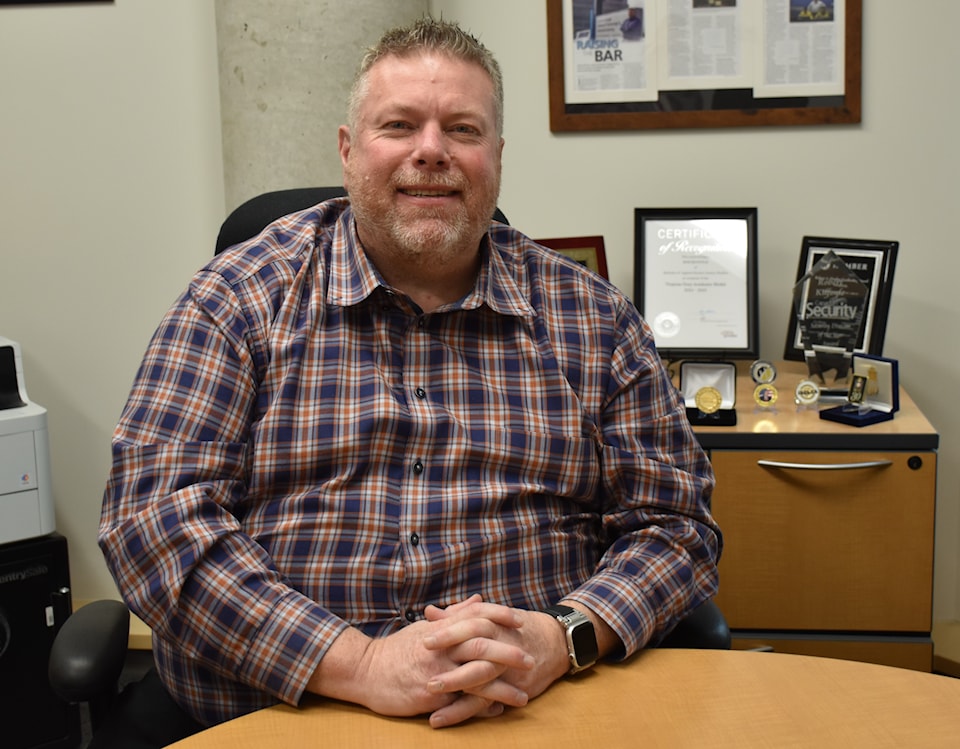I started my first year at Humber Polytechnic - formerly Humber College - in September 2023.
My first day was no different from most students. I commuted to school, had classes throughout the day, did some work and went home.
On my way in, I’d see security guards standing in the busy areas throughout campus. Which, in my head, created the assumption that because they were there, I was safe.
But this routine, which may seem completely normal to any student, changed rather quickly.
Now, I no longer view Humber as a place where I feel safe, even if guards patrol around campus.
It’s become a place where I’m forced to keep my eyes wide open at all times and fend for myself, with the frightening thought that someone is following me. Or worse, that there’s a chance I’d be followed home one night.
Rob Kilfoyle, director of Public Safety and Emergency Management for Humber Polytechnic, said he doesn’t usually discuss the strength of the public safety unit.
However, he did say there is “a significant number of security patrols” throughout the North campus, while also saying they’re “patrolling all the time.”
I find that hard to believe.
In my building, L, I see maybe three guards a week if I’m lucky; however, to be fair, guards regularly inspect Journalism's newsroom. Typically, they’d enter through the front door of the newsroom, go to the back, scan the white sticker with their phone, and call it a day.
When asked a question regarding how many guards are placed per building, Kilfoyle said the campus is divided into what is known as “patrol sectors.”
“If there’s an emergency in a particular location, we have a 24-hour operations centre, which is like our dispatch, it’s almost like a 9-1-1 centre in many ways,” he said.
“We’re able to dispatch security to respond to particular incidents or issues that are happening within a sector, so the guards that are in those sectors respond,” Kilfoyle said.
He also said guards from other sectors could be called to respond if more response is necessary.
In terms of training, Kilfoyle said to become a security guard for the college, there is a “significant number of trainings that are involved.”
“In order to come to Humber, we require you to have at least one year of experience, or comparable,” he said.
“So if you did policing or if you did corrections or if you did something in our field, we’ll accept that,” Kilfoyle said.
In addition, he said security guards must undergo 106 hours of what he calls “pre-deployment training.”
“This includes guards knowing their legal authorities and their powers under the Trespass to Property Act and the criminal code,” Kilfoyle said.
Other types of training they undergo are use of force, mental health, customer service, anti-racism and anti-discrimination training.
He also said 1,200 security cameras on campus are being monitored at all times.
Fast forward to the present day, I spend 95 per cent of my time working in the newsroom and only step out if I need something. Even then, most times I step out with a friend instead of going out by myself.
As the third semester of my program began, the conversation of an individual following people in my program, stalking them and verbally sexually harassing them around campus was brought to my attention.
Having never seen this person around campus, I kept an eye out, but it never worried me too much. Especially since we’d already brought the incidents up to the public safety unit, I had full confidence it would be dealt with.
It’s been months now, and from my understanding, not much, if anything, has been done.
Having brought up this question in an interview before publication, Kilfoyle could not provide a definitive answer.
All he disclosed was that he’s seen some reports come through in the daily shift reports he receives.
It almost seemed as if there must be a specific number of reports for them to actually take this case seriously.
When I asked this question, he said how fast they get around to investigating is determined on a case-by-case basis. Kilfoyle also said they’d have to know “what’s the threat, what are the risks involved, and how likely is it to result in harm.”
It seems the person is still around, spotting him about two weeks ago. I'm not sure how safe I feel at the moment, as risks are determined on a scale. Should I feel a little secure or a lot secure, or somewhere in between?




